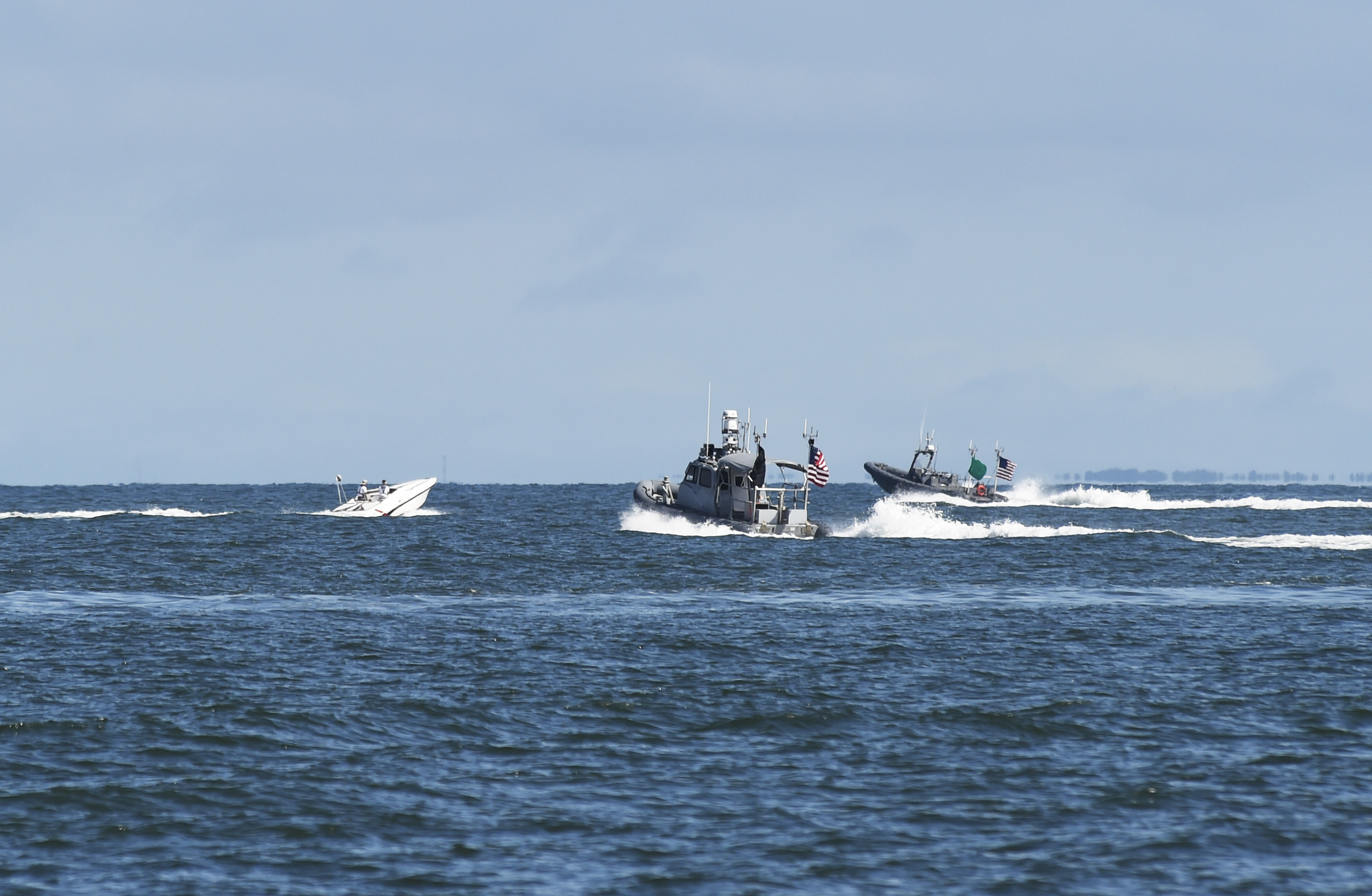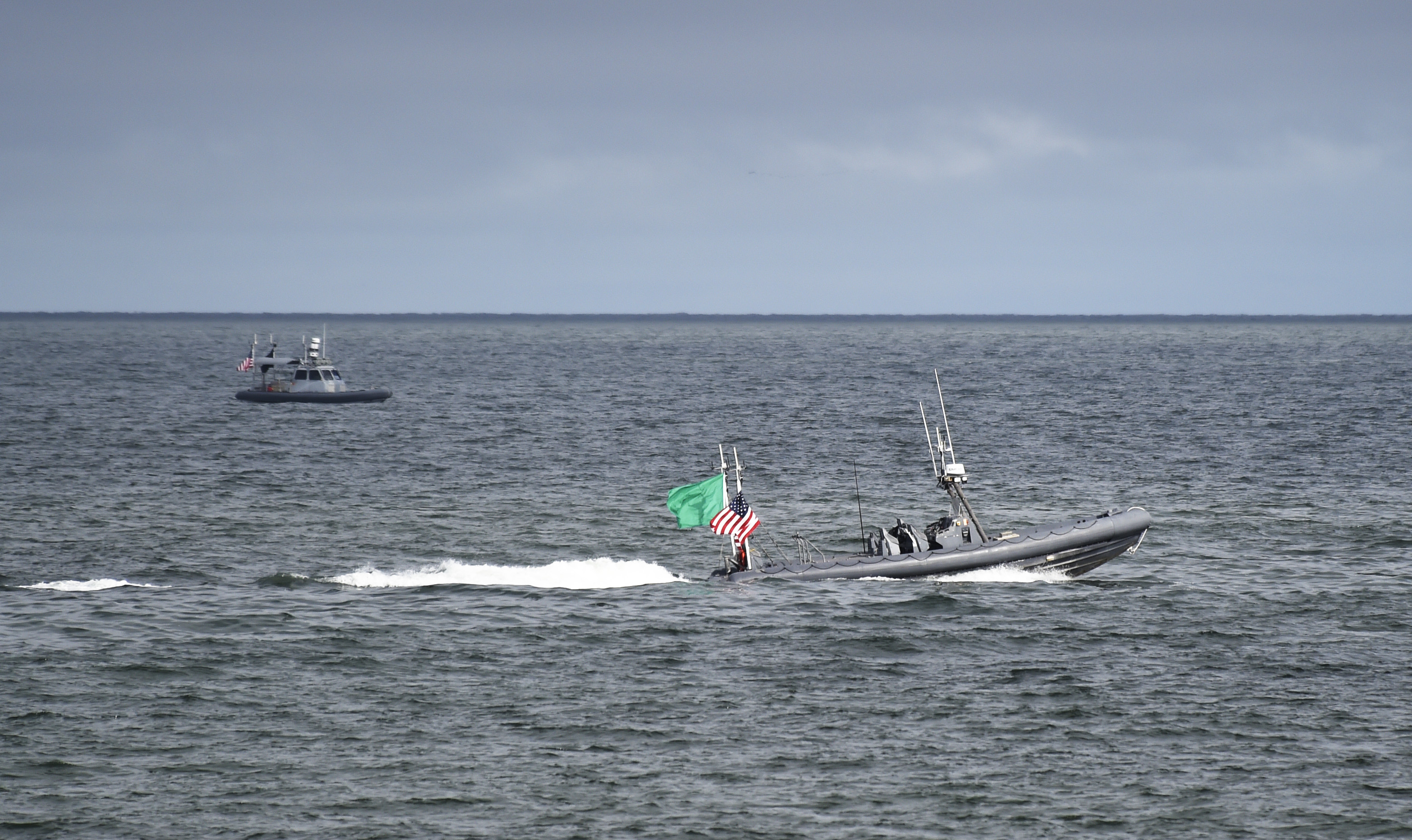
The Office of Naval Research demonstrated for the second time the ability to turn already-fielded small boats into unmanned autonomous systems and use them for missions like harbor defense, two ONR program officials told reporters this week.
A month-long demonstration in the Chesapeake Bay in Virginia allowed ONR to prove that the 7-meter and 11-meter boats that had been converted to autonomous unmanned surface vehicles could not only perceive their surroundings and plan their routes accordingly while performing a mission, as was demonstrated two years ago, but could also now work as a group to delegate tasks, select appropriate behaviors from a behavior library in response to events around them, and identify nearby vessels as friendly or unfriendly after matching what they see to a pre-programmed database of ships they could encounter.
This demonstration, called “Swarm 2, Mission: Safe Harbor,” proved that with minimal human supervision these four unmanned boats could carry out a tactically relevant mission at sea, Small Combatant Craft Program Officer Robert Brizzolara told reporters Wednesday.
CARACaS, or Control Architecture for Robotic Agent Command and Sensing, is the system that ONR developed to integrate into manned boats to give them autonomous unmanned capabilities. Brizzolara said the autonomous behaviors addition to CARACaS is what makes this capability tactically relevant. Rather than performing a pre-programed mission like patrolling an area in a “mowing the lawn” fashion, the boats – in this harbor defense scenario – coordinated amongst themselves and understood when they’d found something in their “patrol” behavior that warranted movement to a “classify” behavior or even a “track,” where the USV stayed close enough to another vessel to be able to see it, or a “trail” behavior, where the USV actively followed the vessel.
Brizzolara told USNI News during the media teleconference that the next step in this program is to expand the library of “behaviors” to include more tasks, as well as improve the ability of the system to recognize when to move from one behavior to another.
“We have these four, and if we add a few more behaviors and open the aperture of different missions that a team of autonomous unmanned systems could do,” then the potential fleet use for this system grows significantly, he said.
“So we’re looking at, what other missions should we be addressing, and what other behaviors would it take to address those missions. So we’re taking steps to broaden the applicability of this team of autonomous USVs to many different missions rather than just the two missions we addressed in this demonstration (harbor defense and harbor approach defense). It’s a behavior development effort, developing new behaviors to do that, and also a key part of this is referred to as behavior-switching. The USVs need to be able to be smart enough to know when to switch, for example, from a patrol behavior into a classify behavior into a track behavior into a trail behavior. And that behavior switching – or the tools that the USVs use to do that – might be different depending on what mission it is. … It’s a matter of not just the behaviors but stitching them together in ways in order for that team to be able to accomplish different missions.”
Ultimately, Brizzolara said, CARACaS will turn these small boats into multi-mission autonomous USVs.
The harbor defense mission was selected for this demonstration because it is so commonly performed by naval forces, he said, and “part of our goal is to get CARACaS into the warfighters’ hands quickly and rapidly gain experience with its use, and so that drove us to missions that the Navy has to do often.”
Cmdr. Luis Molina, the military deputy for ONR’s Sea Warfare and Weapons Department, said in the teleconference that this system could also be used for protection and escort missions, intelligence, surveillance and reconnaissance (ISR) missions and more to help manned warships maintain and expand their sea control.

Importantly, ONR has only put CARACaS on manned small boats already in the Navy’s inventory – 15 different boat types, including four different boats in this demonstration ranging from 7 meters to 11 meters long.
“The decision to go with existing boats is to give the Navy the option of converting a boat that’s already in their inventory to CARACaS autonomous control at relatively low cost,” Brizzolara said, noting that the installation is “not a particularly complicated or expensive endeavor.”
“So to have an autonomous boat, the Navy doesn’t need to go out and procure a new boat design; it can just do a conversion of a boat it already has,” he continued.
“Also, by doing that conversion, it doesn’t preclude the operation of that existing boat still as a manned boat. So now it’s, we call it an optionally manned boat, where the boat could be used for its originally intended purpose or a switch could be flipped and now we take the people off the boat and let it go under CARACaS control. In terms of cost to convert a boat, it depends on the particular boat being converted but generally speaking … it’s in the tens of thousands of dollars to actually do the CARACaS installation.”
Molina added that there are significant long-term costs savings associated with the decision.
“You can think of buying a boat, but there’s a design cost, there’s a certification cost, there’s a ‘will it fit on my ships’ cost,” he said.
“So we’re really taking advantage of an existing logistical supply line: the spare parts for these boats are already in the system, people are already trained in how to use them so there’s no new training involved, people know how to fix them. So there’s a fixed infrastructure that’s already in place to service these boats, and we’re just riding on top of that. And that’s a significant benefit for the overall transition eventually and for an overall cost savings throughout the lifecycle of whatever program comes out of this.”
Brizzolara said there is no timeline yet for when the next demonstration will be, as it will depend how long the research team needs to expand the behavior library. But he said there would definitely be another demonstration after this upcoming technology development phase, and he added that some components of CARACaS are already being demonstrated in other programs such as the Sea Hunter, which the Defense Advanced Research Projects Agency (DARPA) created under the Anti-Submarine Warfare Continuous Trail Unmanned Vessel (ACTUV) program and the Navy will transition in as its Medium Displacement Unmanned Surface Vehicle (MDUSV).





